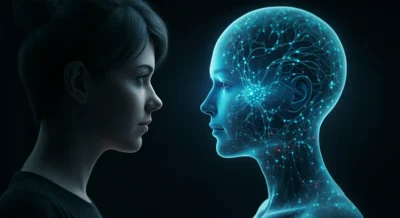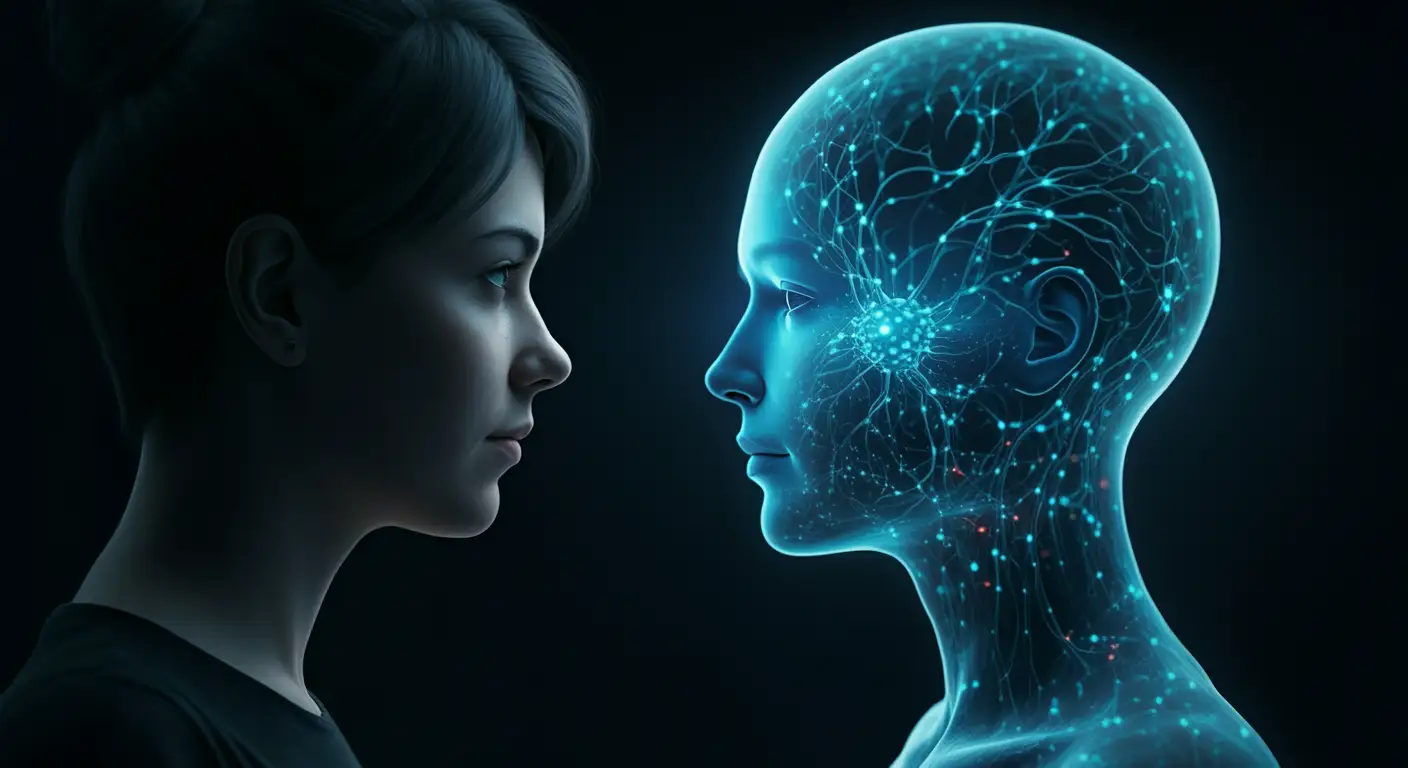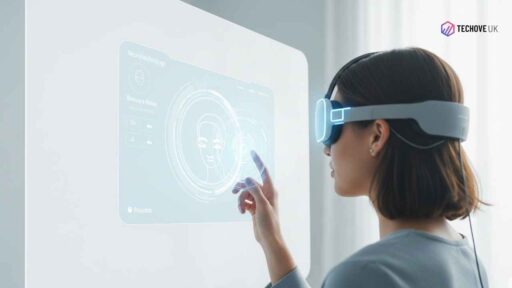Introduction: A New Dawn in Human-AI Collaboration
Welcome to Techove UK. We can write our amazing content experiment about Pioneering Neuro Tech for Seamless Human-AI Collaboration with powerful details and information.
Imagine a world where the boundaries between human thought and machine intelligence blur into seamless harmony. A place where technology not only assists us but also becomes an extension of our very minds. This is no longer the stuff of science fiction—it’s the reality shaped by Pioneering Neuroscience Tech. This field merges neuroscience, artificial intelligence, and cutting-edge engineering to create tools like brain-computer interfaces (BCIs). These innovations are unlocking new possibilities for mental health, physical rehabilitation, and even creative expression.
In this case study, we’ll explore how neurotech startups, research institutions like Stanford University, and companies such as Blackrock Neurotech are in charge of creating seamless human-AI collaboration. Alongside these advancements, we’ll meet the bionic pioneers—individuals who have embraced this technology to overcome challenges and redefine what it means to be human.
What is Neurotechnology?
At its core, neurotechnology refers to tools and devices that interact directly with the nervous system. These technologies can read brain signals, interpret them using advanced algorithms, and translate them into actions or feedback. Think of it as a bridge between your thoughts and the digital world.
One of the most exciting aspects of neurotechnology is its potential to revolutionize mental health care. For example, BCIs are being developed to help individuals with depression or anxiety by monitoring brain activity in real-time and providing personalized interventions. This approach could transform how we understand and treat mental health conditions.
But neurotechnology isn’t just about treatment—it’s also about empowerment. The possibilities are endless, from enabling paralyzed individuals to control robotic limbs to helping artists create music using only their thoughts.
The Role of Brain-Computer Interfaces (BCIs)
What Are BCIs?
A brain-computer interface (BCI) is a system that allows direct communication between the brain and an external device. By capturing electrical signals from neurons firing in your brain, BCIs can translate these signals into commands for computers, prosthetics, or other machines.
For instance, imagine you’re thinking about moving your hand. Even if you cannot move it physically due to injury or illness, a BCI can detect those neural signals and use them to control a robotic arm—or even type words on a screen.
How Do BCIs Work?
The process involves three main components:
- Sensors capture brain activity through methods like EEG (electroencephalography) or implanted electrodes.
- Decoders: Advanced algorithms interpret neural signals into actionable data.
- Effectors: Devices like robotic arms or computer interfaces execute the desired action based on decoded signals.
Companies like Blackrock Neurotech have been at the forefront of developing high-performance BCIs that push these boundaries further every day.
👉Related Post: The Astonishing Rise of Neuro Linguistic Programming (Case Study)
Case Study: Charco Neurotech – A Beacon of Hope
One standout example in this field is Charco Neurotech, a company dedicated to improving life for people with Parkinson’s disease through innovative neurotechnology solutions.
Charco’s flagship product uses gentle vibrations applied near specific nerves to reduce tremors and improve mobility for Parkinson’s patients. While not strictly a BCI, Charco exemplifies how neuroscience-driven innovation can enhance quality of life without invasive procedures.
Their work highlights an important aspect of neurotechnology accessibility. By focusing on non-invasive solutions that are easy for patients to use at home, Charco ensures their technology reaches those who need it most—not just those who can afford expensive surgeries or treatments.
The Challenge
Parkinson’s disease is a neurological disorder that influences movement, causing tremors, stiffness, and trouble with walking. Traditional treatments can help, but they often have side effects and barriers.
The Solution
Charco Neurotech, a UK-based startup, developed a wearable tool that uses subtle vibrations to lessen Parkinson’s symptoms. The CUE1 tool is worn at the chest and stimulates the mind’s natural rhythms.
The Results
Patients using the CUE1 pronounced considerable upgrades in their symptoms, which include decreased tremors and better mobility. One person even defined it as “existence-changing.” This is an ideal example of how pioneering neuro tech for seamless human-AI collaboration (Case Study) could make a real distinction in human lives.
The Bionic Pioneers: Real Stories of Transformation
Behind every technological breakthrough are stories of courage that remind us why this work matters so deeply. Let’s meet some of these remarkable individuals:
Ian Burkhart: The First Bionic Pioneer
Ian Burkhart was paralyzed from the neck down after a diving accident. Still, he became one of history’s first “bionic pioneers” thanks to groundbreaking research at Ohio State University in collaboration with Battelle Memorial Institute. Using an implanted BCI developed by Blackrock Neurotech, Ian regained partial control over his hand movements—a feat once thought impossible.
His journey underscores how BCIs aren’t just about restoring lost function; they’re about restoring hope.
Nathan Copeland: Art Meets Technology
Nathan Copeland suffered spinal cord injuries following a car accident but went on not only to regain limited motor function through BCIs but also became an artist! His ability to paint digitally using only his thoughts showcases how these tools empower creativity and functionality, a testament to human resilience and ingenuity!
Stanford University & The Future Of Mental Health Care
Stanford researchers have long been leaders advancing understanding and applications surrounding neuroscience, particularly in addressing pressing societal issues, such as improving access to effective, affordable treatments combating widespread crises affecting millions globally today, namely deteriorating states’ emotional psychological well-being.
Through pioneering efforts spearheaded by multidisciplinary teams spanning departments, psychology, psychiatry, and engineering, computer science, the institution continues pave way towards brighter tomorrow leveraging power AI-driven analytics coupled sophisticated wearable devices capable detecting subtle shifts mood cognition before symptoms escalate crisis levels thereby enabling timely interventions tailored individual needs preferences ultimately fostering healthier happier communities worldwide.
The Role of AI in Neuro Tech
AI is the name of the game sauce that makes present day pioneering neuro tech so powerful. By analyzing large quantities of mind statistics, AI can perceive styles and make predictions that could not be possible for human beings alone.
For instance, researchers at Stanford are using AI to improve the accuracy of BCIs. By educating algorithms on brain signals, they’ve created systems that could precisely interpret the mind. This is a game-changer for fields like mental fitness, where early detection of problems like depression or tension could lead to better effects.
The Pioneers Behind the Revolution: Spotlight on Bionic Pioneers
No discussion of neurotechnology could be complete without acknowledging the pioneer organization driving this revolution. These individuals and corporations aren’t just inventors; they’re visionaries shaping the future of humanity.
Take Stanford University, for instance. Its neuroscience department has produced groundbreaking studies on neural interpreting algorithms, which form the spine of contemporary BCIs. Meanwhile, Blackrock Neurotech has emerged as a frontrunner in implantable devices, imparting hope to sufferers with extreme disabilities.
Then there’s Charco, a startup specializing in wearable neurotech for mental health. Their flagship product uses superior sensors to tune physiological markers of strain and tension, empowering customers to care for their well-being.
These pioneers remind us that in the back of each technological soar is a team of devoted innovators devoted to enhancing lives. They encompass the spirit of collaboration among human beings and AI, proving that collectively, we will obtain super things.
Challenges and Ethical Considerations: Navigating the Gray Areas
Of course, no innovation comes without challenges. As neurotechnology advances, ethical questions stand up. Should we permit direct access to the brain? Who owns the facts generated by these devices? And perhaps most importantly, how will we ensure equitable access to life-changing technologies?
Addressing those concerns requires a multidisciplinary approach involving policymakers, ethicists, and technologists. Transparency and accountability should continue to be at the forefront of development to build user confidence.
To simplify these complicated troubles, don’t forget a diagram illustrating the balance among innovation and ethics. On one side, you’ve got progress indicators like improved quality of life; on the other, safeguards include statistics privacy laws and informed consent protocols.
Statistics and Trends: The Rise of Neurotechnology (2020–2024)
Let’s ground our exploration with some tough numbers. According to reviews from enterprise analysts and educational journals, here are some key traits highlighting Pioneering Neuro Tech for Seamless Human-AI Collaboration (Case Study) :
- Between 2020 and 2024, investment in neurotech startups grew by 65%, reflecting increasing confidence inside the quarter.
- By 2023, over 500,000 human beings globally had benefited from BCI-based treatments, up from just 50,000 in 2018.
- Searches for “mind-laptop interface” accelerated by 80% at some point of this period, signaling heightened public interest.
- Mental fitness programs accounted for 41% of neurotechnology sales in 2024, underscoring its developing significance.
These records underscore the transformative impact of neurotechnology throughout diverse fields.
Conclusion: A Poetic Reflection on the Pioneering Neuro Tech
The outstanding upward push of pioneering neuro tech for seamless human-AI collaboration (Case Study) is a testimony to human ingenuity and the power of generation. From helping sufferers with Parkinson’s disease to enabling seamless communication among the brain and machines, pioneering neuro tech is changing the arena in ways we once thought impossible.
As we look to the future, the ability of pioneering neuro tech is limitless. Whether it’s via groundbreaking BCIs, AI-driven treatment plans, or revolutionary startups like Charco Neurotech and Blackrock Neurotech, one thing is clear: the destiny of human-AI collaboration is here, and it’s more exciting than ever.





